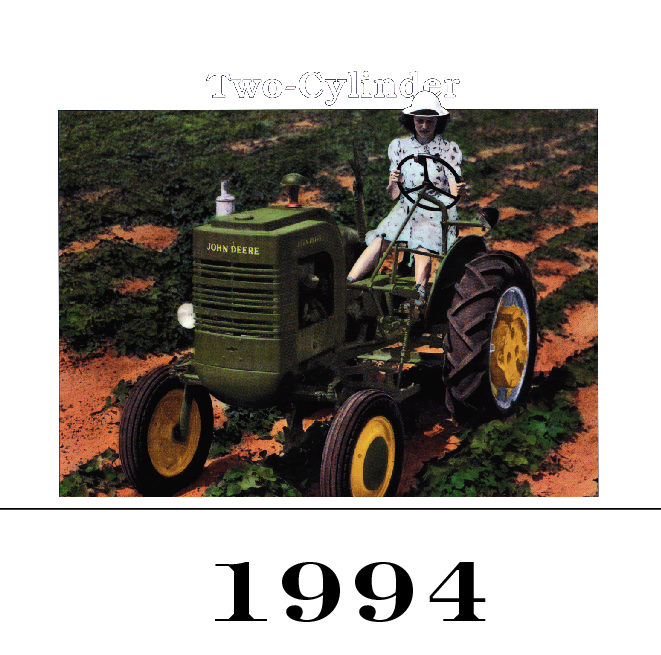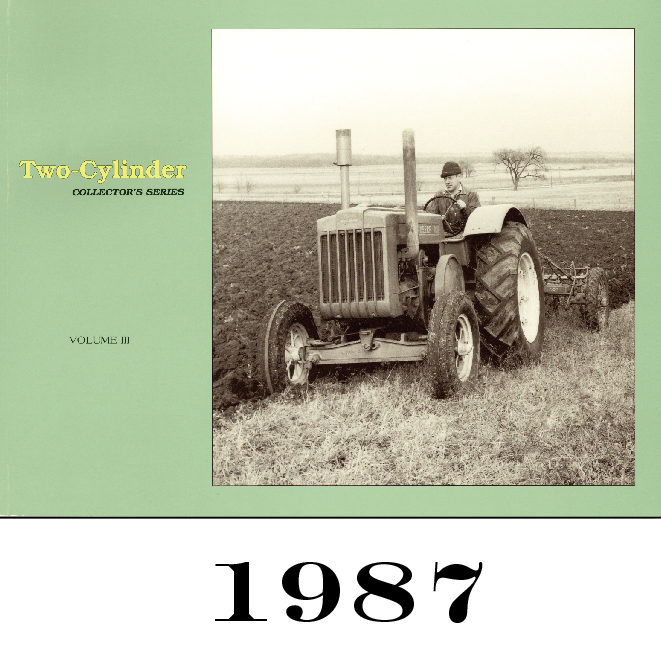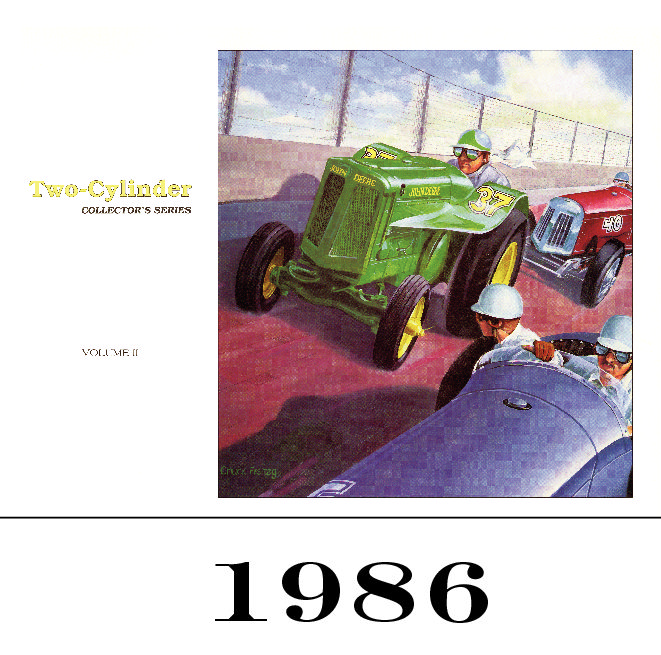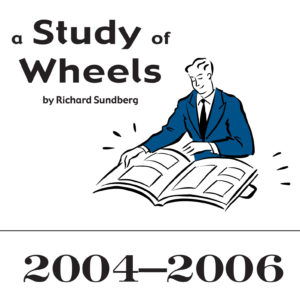
1992 Feature Articles — CD-ROM
December 2, 2018
1994 Feature Articles — CD-ROM
December 2, 2018$14.95
The Lindeman Story
The John Deere Model “40” Tractor
The Grand Opening
The John Deere Model “GP” Standard X/O Tractor
John Deere and World War II
The John Deere Unstyled Model “AO” Tractor
THE LINDEMAN STORY: In 1919, when Jesse Lindeman was just 20 years old, he left Cass County, Iowa, and headed to Washington State. After a year’s experience in the air service of the U.S. Army during World War I, he was determined to see the world. With an uncle in Ellensburg, Washington, this seemed a good place to start. Little did he envision that, armed with an eighth grade education, he would stay in Washington all his life and become a self-taught agricultural engineer and one of the best-known and most-admired personalities involved in agricultural development in the 20th century.
MODEL “40” TRACTOR: Beginning with the 1953 model year, the “40” replaced the “M”. It was the second series to be built at the John Deere Dubuque Tractor Works, and expanded their lineup with the addition of Hi-Crop, Special, and Two-Row Utility Models. The “M” Series had been offered in Standard, Crawler, Industrial, and Tricycle variations.
John Deere advertised the “40” Series as being made up of a track-type tractor and six basic wheel-type tractors. To the avid collector of this series, there are additional varieties within specific models. The crawler, for example, was offered as a 3-, 4-, or 5-roller tractor; and the tricycle could be had with the conventional dual front wheels in tricycle fashion, a single front wheel, or either of two adjustable-wide front axles.
THE GRAND OPENING: About 4000 visitors joined in to celebrate the Grand Opening of the Two-Cylinder Center. About half that number filed through the Display Floor during the hours following the ribbon-cutting ceremony on Monday. Most stayed inside as long as the traffic flow allowed, which was the sensible thing to do considering the weather. Cold, windy, and intermittently rainy, Monday was not unlike many days this spring — noted for its unusually long delay in producing friendly weather patterns.
Several hundred other visitors preferred the activity at the Swap Meet of John Deere items, held at the Grundy County Fairgrounds a half mile from the Center.
MODEL “GP” STANDARD X/O TRACTOR: The first general knowledge of the existence of “GP” Standard-Tread Tractors equipped with a “crossover” manifold trickled in from Ontario, Canada. It was speculated that only about five or six of these tractors were produced — and that they were probably rebuilt crossover Wide-Treads that had lingered in inventory at the Tractor Works at Waterloo, Iowa. Before getting into the details of what is believed today to be correct information on the crossover standard-treads, it’s worth a look to see what the tractor is… and isn’t.
JOHN DEERE and WORLD WAR II: The nations the United States fought so bitterly half a century ago are among those with which it has good relationships today. The outcome of World War II was decided on the battlefields, and overall victory can be directly linked to the support provided by the home front. Deere & Company began its support of allied nations even before the United States entered the war, and continued on throughout the campaign. This 50th Anniversary WW II Edition of Two-Cylinder recalls some of those efforts.
Quite possibly the most widely known product manufactured by Deere & Company during World War II was the transmission and final drive assemblies for the M3 and M4 medium tanks.
The Iowa Transmission Company was formed in 1941 as a separate division within the John Deere Tractor Works at Waterloo, Iowa. Deere had an agreement with the Army Ordinance Department to manufacture the transmission and final drive assembly on a cost plus fixed fee contract. A government office at the site was opened in July 1941. The M3 units went into production immediately, followed by the M4 a year later.
UNSTYLED MODEL “AO” TRACTOR: Standard-tread tractors are most frequently associated with open field work and grain growing, as opposed to row-crop farming. As some would say… “drawbar work.” They get tagged with nicknames such as “wheatland” and “rice special.” in row-crop farming regions where standard-treads aren’t very common, they attract a lot of attention. Folks in wheat country can’t figure out why people keep buying their old tractors and hauling them away.
There are variations within the standard-tread family that are often even more exciting to collectors. The orchard tractors. Perhaps they conjure up images of sun-ripened fruit and pleasant places, which simply adds to something John Deere enthusiasts already know… there’s nothing quite like the sound of a two-cylinder tractor.
Orchard tractors have another plus — there were far fewer built. In the case of the early orchard version of the standard-tread Model “A” family, the unstyled “AO”, production wasn’t quite one-fourth that of the unstyled “AR”.
- Information-packed, educational, and entertaining Feature Articles; with photos and accuracy unmatched elsewhere!
- Each CD contains all of the Feature Articles for an ENTIRE YEAR, and is enclosed in its own unique sleeve!
- Searchable PDF format! What does that mean? You’ll be able to easily locate specific subjects in the article, “zoom-in” on photos (in color and b/w), and print off any part (or the entire article) for your personal use.
CD-ROMS are for COMPUTER-USE ONLY and WILL NOT PLAY on traditional television or radio entertainment systems!!! Opened CDs are not eligible for refund or return. Computer System Operating Requirements: Adobe Reader 8.1.3 • Adobe Reader 9 • Windows Vista • Windows XP • Windows 2000 SP4 and higher • Mac Intel/PowerPC 10.4.11 – 10.5.6 • Mac Intel 10.4.4 – 10.4.10 • Mac PowerPC 10.4.3 – 10.4.10, and higher





Reviews
There are no reviews yet.